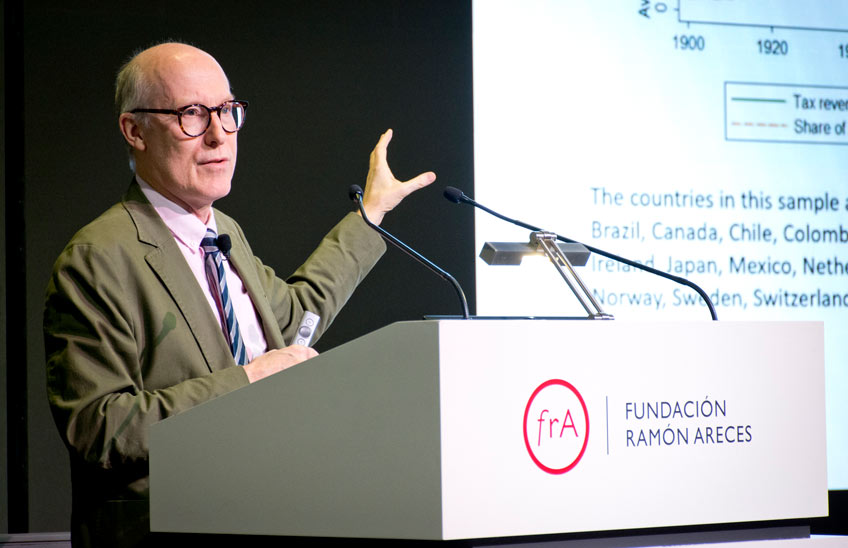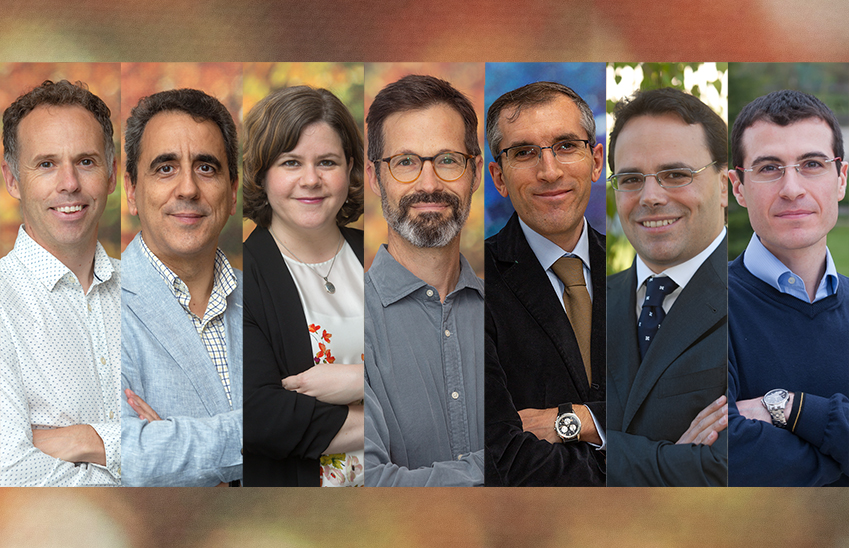University research has detected an increase of prolific authors in scientific journals attributable to AI
Researchers at the Institute for Culture and Society have analyzed 730,000 letters to the publisher published between 2005 and 2025.

PhotoManuelCastells/Mirko Abbritti, Itzel de Haro, Carlos Chaccour, Fhabián Carrión-Nessi, Gonzalo Arrondo and Javier García-Manglano, researchers at the ICS of the University of Navarra.
10 | 11 | 2025
Researchers at the Institute for Culture and Society (ICS) of the University of Navarra have detected an abnormal increase in letters to the publisher between 2023 and 2025 that can be attributed to the use of artificial intelligence. In the article Robot pen pals: a multidisciplinary analysis of recent trends in scientific correspondence, the experts analyzed 730,000 letters to the publisher available on the scientific platform PubMed, published between 2005 and 2025, and detected a growing issue of authors whose correspondence had increased unusually in the last two years.
The germ of the research was the own experience of Carlos Chaccour, lead author of the article and researcher at the Navarra Center for International Development (NCID) of ICS. He received a letter to the publisher refuting one of his articles that used quotes from Chaccour himself to refute him. "It's kind of absurd," the expert jokes. After discussing it with the publisher, he decided to inquire about this author, Dr. B.S., a prolific expert capable of publishing 80 letters a year addressing 58 different topics in biomedicine. When Fhabian S. Carrion-Nessi, Chaccour's colleague, ran his letters through an artificial intelligence detector, his suspicions were confirmed: " 75% was 100% content created by artificial intelligence ". From there he began his retrospective analysis back to 2005. "It's very difficult to prove that someone is using ChatGPT for their letters," adds Chaccour, but they do see suspicious cases of authors who, "suddenly become prolific."
research has shown an increase in the number of letters to the publisher: from 1.16 letters per author per year to 1.34 letters per year. Moreover, 22% of published letters have risen from the 5% percentile (least published) in 2005-2022 to 95% in 2023-2025. This puts other researchers at a disadvantage because "the letters market is becoming monopolized," explains Mirko Abbritti, an Economics expert and director of NCID.
To understand this concentration of firms and its implications, experts have turned to macroeconomic concepts. For example, the Gini index measures inequality in an Economics. If wealth is distributed equally, the index is zero. In cases of maximum inequality, the index would be one. In the case of cards, the index goes from 0.1 to 0.25. "This change may seem small, but it is huge, it means that inequality has doubled," he notes. It means that 100 authors produce as many letters as the 70,000 others who manage to publish, taking away 'space' in the market for other experts to publish.
Suspected Chatbots
The authors point out that, when publishing, the acceptance rate must also be taken into account. Publishing 80 letters means that, perhaps, up to 400 could have been sent to journals, but not all of them have been accepted. "Not only are there a lot of people who have greatly multiplied their output, but there are people who are making a very strong debut," Chaccour details.
Between 2005 and 2022, more than 90% of researchers writing their first letter to the director were able to publish one letter per year. A first-time researcher with three letters to the publisher accounted for 1.2% of cases, five letters 0.2% and, up to 10 letters, 0.02%. According to the article, as of 2023, those numbers have increased by 60%, 250% and nearly 400%, respectively. These stellar debuts are doubling every year. As the experts explain, a "tiny" percentage of authors, who have also made a very good debut, are producing almost a quarter of the cards.
Carrión-Nessi exposes four patterns to detect the use of artificial intelligence in scientific correspondence: first, they reach the publisher very soon after the article to which they are replying is published, then, they are shorter texts -about 500 words-, have fewer references and use more topics.
To prevent this subject of suspicious letters from being published, researchers advocate that publication policies should be changed. However, why letters to the publisher and not other formats? Letters to the publisher are a form of peer review once the research is already published and are a way to keep the scientific discussion open. Their brevity, minimal references and lack of original data make them the perfect target for AI. These letters are a quick way to get the author's name in a journal and, in addition, they are indexed in PubMed. "Letters to the publisher are a near-perfect example of what the potential and risks of generative artificial intelligence are," Abbritti says.
And what does ChatGPT have to say on the matter? Asked by the researchers themselves, it offers this answer: "The real risk for people is not a conscious artificial intelligence attacking humanity, but an ecosystem that optimizes the wrong goal : Quantity over truth. After all, a chatbot is just a machine that replicates and amplifies human behaviors.
Carlos Chaccour, Mirko Abbritti, Itzel de Haro, Fhabián S. Carrión-Nessi (from the Navarra Center for International Development), Gonzalo Arrondo (from the 'Mind-brain'group ) and Javier García Manglano (from the 'Youth in transition'group ) are the authors of the ICS of the University of Navarra who signed the article.



